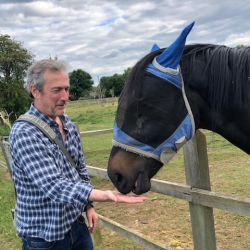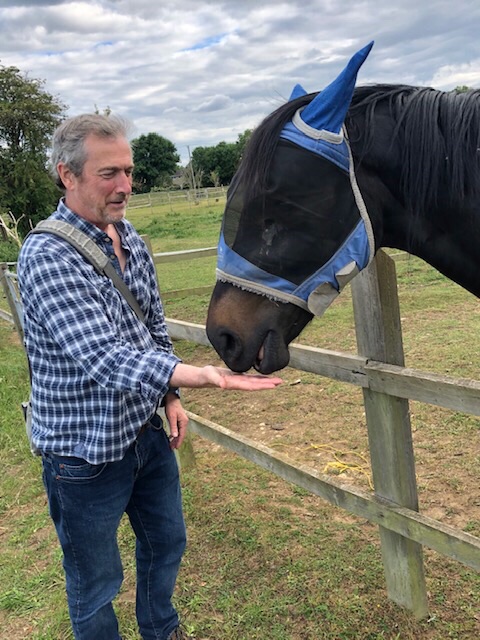
Mark Crean
Oxford, Oxfordshire
My interests are the photography of place and the stories that different places give rise to. I also love event photography and the tingly thrill of knowing it’s all live and there is no re-shooting! MA Photography graduate. Currently using Fuji GF...
Read More
About Mark Crean
My interests are the photography of place and the stories that different places give rise to. I also love event photography and the tingly thrill of knowing it’s all live and there is no re-shooting! MA Photography graduate. Currently using Fuji GFX on medium format and Sony on full frame.
Forum Topics Started
-
- Subject
- Started By
- Voices
- Posts
- Views
- Last Post
-
- Jan Bell Hits the Spot
- Mark Crean
- 5
- 5
- 286
-
1 year, 3 months ago
by Jeremy Roussak
- Canon Prograf 300
- Mark Crean
- 4
- 7
- 753
-
2 years, 10 months ago
by Mark Crean
- Gentle Decay
- Mark Crean
- 1
- 1
- 330
-
3 years ago
by Mark Crean
- A Corner of the Garden
- Mark Crean
- 2
- 2
- 408
-
3 years ago
by Russ Lewis
- Old English Architecture
- Mark Crean
- 1
- 1
- 359
-
3 years ago
by Mark Crean
-
Forum Replies Created
-
AuthorTopic: Members Read 0 Times
-
New Article Announcements & Discussionson: January 3, 2023 at 8:58 am
Just wanted to say how much I appreciate Jan Bell’s essay. While I shoot slightly different subject matter, his whole approach to photography and interpreting the image, and his love of black and white, really resonates with me. Best wishes for a full return to walking those trails!
Re: MagnoliaReply #1 on: May 31, 2021 at 4:14 pmHi Daniel,
First of all: I see small but possibly important improvements in your revision – at least they might be important if you were planning a wall-sized print. On the other hand I see that you removed the small imperfections in the original that made it more believable, believability being photography’s forte.
I agree that the subject might make for an interesting discussion in a thread of its own, though I suspect we’ll have covered most of the available ground right here. As far as painters are concerned, if a painter is good he needn’t hunt for an “interesting view.” He can start with an interesting view in his head. It’s the difference that makes street photography the genre most important for photography. The result is – or was until Photoshop came along – believable to most people, even though Stalin demonstrated with his photographic removal of Trotsky that you can’t always believe your eyes.
Yes, I’m thoroughly familiar with the gyrations Ansel went through to produce the final version of Moonrise Hernandez. (Stalin’s folks could have learned a few things from him.) But I think the reason and the way he shot Moonrise is a lot more important than his later “corrections.” I wrote about it four years ago: http://www.russ-lewis.com/essays/WhyClicktheShutter.html.
I’ll close by quoting myself from http://www.russ-lewis.com/essays/WhatisPhotographyFor.html :
“Most people know who Ansel Adams was, and many of them have seen a few of his pictures – often in banks or doctors’ offices. But both Henri Cartier-Bresson and Robert Frank were far more influential photographers than Ansel was.”
That’s not to knock Ansel. Long ago I read everything Ansel wrote and took up the Zone System with a vengeance, at least when I was shooting with a stand camera. But Henri and Robert dealt with people, which is what strikes a note in the hearts of other people. That’s what a camera really is for. As far as I’m concerned, the best picture Ansel ever made was the picture of a woman behind a screen door.
imperfections … more believable … I think this becoming more and more of an issue in photography. It strikes me as a search for authenticity and connection (other people, as you say) at a time when even PP is becoming automated. In turn that’s influencing what we expect from an image. One can see this in Adobe’s gradually more punchy and colourful defaults in Lightroom. Apple’s defaults saturate everything so far as I can tell and they must be clicked many millions of times a day. This approach is not to my taste but, as they say, if you see something often enough it can start to seem the normal thing.
More and more folks are switching to film to slow down, think and get away from it all. Good MF or 5×4 images on film can be superb. So I think this is very much a live issue, albeit with no one answer. Or if there is an answer it’s to blow the status quo out of the water to the point where nothing will be the same again which is what Frank did with The Americans. ‘PP’ is the last think I’d think of when looking at images that reach out and compel one’s attention. But I guess that only comes along a couple of times in a century. Maybe about time another one came along!
-
This reply was modified 2 years, 10 months ago by
 Mark Crean.
Mark Crean.
Re: Canon Prograf 300Reply #2 on: May 31, 2021 at 3:30 pmI have the ProGraf 300 and am very happy with the output and can recommend it. Keith Cooper at Northlight-Images (http://www.northlight-images.co.uk/) has done a comprehensive review of the Pro 200, 300 and the Epson printers. He’s very good and I recommend you read and listen to what he has to say. He makes some very good points about how to decide on the 200 vs 300.
Thanks for the heads up!
Re: Creating Artistic Photographs Film to Digital Paradigm Shift: Part 1Reply #3 on: May 29, 2021 at 4:04 pmHi Mark,
Yes, good thoughts. I’ll only take issue with one point, where you say “it’s not about the post-processing”. All the other things you talk about are necessary ingredients to producing a good photograph, but most of time, at least in my experience, competent post-processing is also a necessary ingredient. This, by the way, was also true during the film era, except now we have so much control – and easier control – over it.
Oh yes I agree. I guess what I was trying to say is that competent processing depends on the other things first or there is nothing worth processing! I’ve often found of my images that the ones that work well don’t need much PP (though they definitely need some). If I find I am doing a lot of PP on an image, it’s usually a sign that the image isn’t up to snuff to begin with and/or I haven’t worked out what I am trying to express. If one starts PP with a good idea of what one is trying to say it always seems to go easier.
-
This reply was modified 2 years, 10 months ago by
 Mark Crean.
Mark Crean.
Re: Creating Artistic Photographs Film to Digital Paradigm Shift: Part 1Reply #4 on: May 29, 2021 at 6:53 amInteresting subject. One point is that both ‘professionals’ (if there still are any) and amateurs use the same kit these days, so the point becomes how to make one’s images stand out from the 1.4 trillion or so made each year while also staying true to oneself. Technical excellence alone is not enough. Besides, pretty well all modern cameras and lenses are capable of technically excellent exposures if used well and can produce prints ahead of anything on 35mm film. For myself, I try to avoid the overprocessed, oversmooth digital look one can see on 1001 images on social media or Flickr. I’ll take a sense of being there ahead of all that. Behind this, I think, is a need to find something authentic in an age of mechanical reproduction, as the man said. No easy answers, but some folks have the knack. Usually, I suspect, it’s not about the post-processing but the composition, framing, understanding of light and the ability to spot the moment – the skills that don’t depend on technology at all. Steve Gosling’s essay on here recently was a real lesson in that. Just 2 cents for the debate …
-
This reply was modified 2 years, 10 months ago by
-
AuthorPosts
